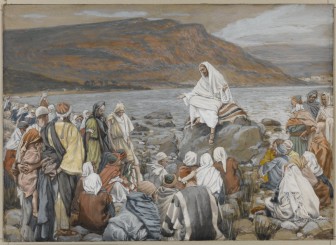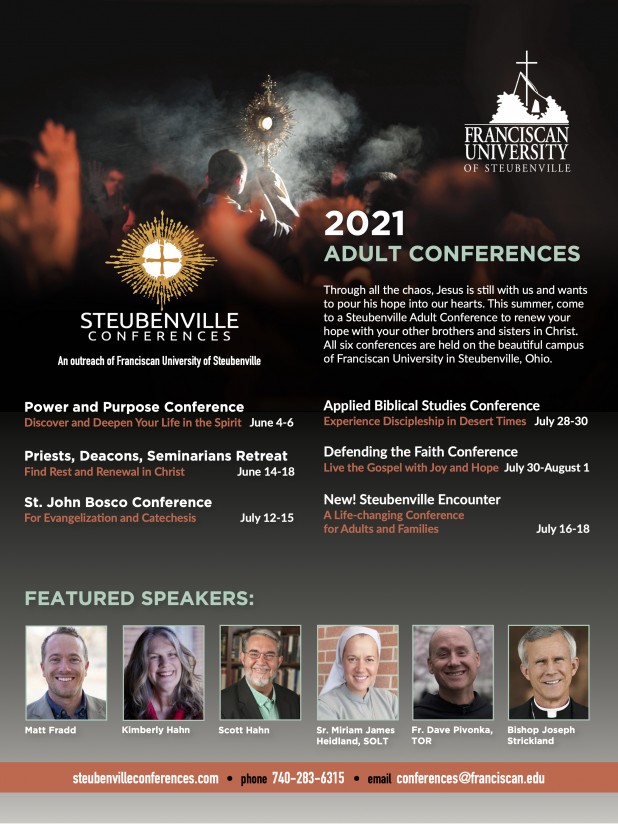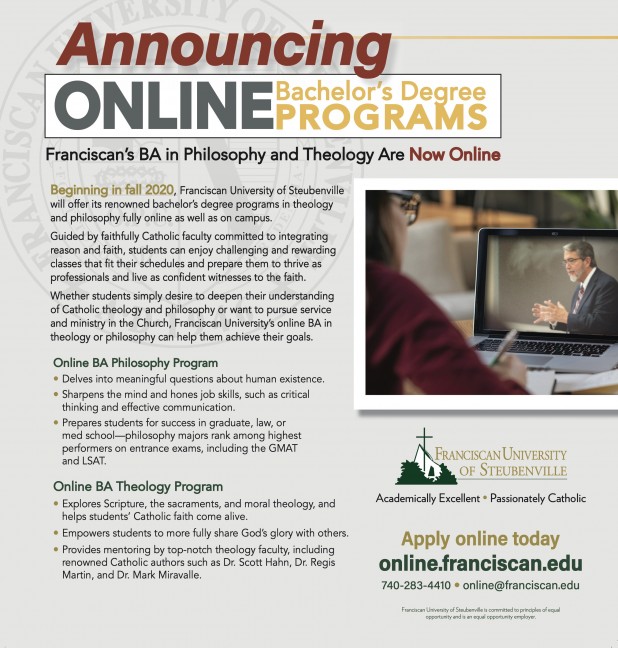Educating in the Lord’s Ways
This article explores chapters 5-6 of the Directory for Catechesis.
When we have reached chapters five and six in the Directory we would be forgiven for being tempted to jump nimbly over these two chapters into the details of methodological considerations so amply provided in chapter seven and the focus on different groups to whom we minister in chapter eight. We have already received the Directory’s account of catechetical goals, both ultimate and proximate; we have benefitted from a rich account of the person of the catechist and of the catechist’s formation needs. We know the tasks of catechesis and where to draw from the wells of the Church’s sources for our ministry needs. We have already examined questions of structure and been guided to understand how to use the catechumenal model as a paradigm for all catechesis. The necessary kerygmatic nature of catechesis has been developed at length for us. In short, we are ready to examine questions of application and the practical out-workings for how to fit all of this into our ministerial contexts.
The two chapters we now face stand at the entrance to the discussion of methodology and might seem to us a rather unwieldy and unnecessarily lengthy introduction to that subject. We are in a new part of the Directory, “The Process of Catechesis,” which seems to speak to the level of immediate practicalities, and yet the tone is theological and the themes appear to be picking up those of the opening chapter on the content of Revelation. What function do these two chapters perform within the whole? Are we facing simply a kind of reflective interlude, or is there something more substantial for the work of catechesis being offered here?
Understanding the Process of Catechesis
The best way to approach these chapters is, in the first place, to keep in mind the broader heading of the part within which they are found: “The Process of Catechesis.” These chapters, together with chapter seven on catechetical methodology, describe the process by which all authentic catechesis takes place. They tell us, in other words, what is taking place in catechesis. That “is” contains a hidden “ought,” of course: they describe what takes place in all catechesis that is undertaken according to the mind and heart of the Church.
The second point of importance is to read these two chapters together, as a pair. Chapter five explains what it calls “the pedagogy of the faith” and chapter six illustrates what this pedagogy looks like and provides us with an exemplar in the form of the Catechism of the Catholic Church. In what follows, then, we will treat the two chapters together, unfolding the meaning of the pedagogy of the faith and then seeing how it is manifested for us and made clear in the Catechism. There are three elements in the “process of catechesis” to which the Directory alerts us.
Nuestra vocación personal
Hay un  tema fundamental que corre a lo largo de la Sagrada Escritura: ser llamado por su nombre. Dicho de otra manera, en los ojos de Dios, tú y yo no somos simplemente uno del montón, ni tampoco somos un número seriado.
tema fundamental que corre a lo largo de la Sagrada Escritura: ser llamado por su nombre. Dicho de otra manera, en los ojos de Dios, tú y yo no somos simplemente uno del montón, ni tampoco somos un número seriado.
From the Shepherds: Our Personal Vocation
A fund amental theme that runs throughout Sacred Scripture is to be called by name. In other words, in the eyes of God, you and I are not simply one in a crowd, nor are we a serialized number.
amental theme that runs throughout Sacred Scripture is to be called by name. In other words, in the eyes of God, you and I are not simply one in a crowd, nor are we a serialized number.
Becoming Windows for the Light of the Living God
This article explores chapters 3-4 of the Directory for Catechesis.
One could liken chapters three (The Catechist) and four (The Formation of Catechists) of the new Directory for Catechesis to a meditation on windows and how they are made.
Identity and Vocation of the Catechist
In the early Church, those who followed the Way were often called “saints.” This designation did not refer to the canonized (or even “canonizable”), but to the fact that, as Joseph Ratzinger points out, all of the faithful were called “to use their experience of the risen Lord to become a point of reference for others that could bring them into contact with Jesus’ vision of the living God.” Ratzinger applies the image to the present, saying that believers should, “in all their weaknesses and difficulties, be windows for the light of the living God.”[1]
Like a window, which offers a particular glimpse of light outside, the catechist facilitates a unique encounter with his or her own source of light. The catechist is a reference point, a witness to the Tradition of the Church and “a mediator who facilitates the incorporation of new disciples of Christ into his ecclesial body” (DC 112).
This means, of course, that the catechist participates in a mission that he or she did not initiate. As the Directory says, the catechist is “a facilitator of an experience of faith of which he is not in charge” (DC 148). Instead, the catechist is empowered by the Holy Spirit, “the true protagonist of all authentic catechesis,” and participates in Jesus’ mission “of introducing disciples into his filial relationship with the Father” (DC 112). Catechesis is, above all, what Benedict XVI calls a theandric activity. This is to say it is “made by God, but with our involvement and implying our being, all our activity.”[2] The True Catechist—and this is a critical point—is Jesus Christ. The window itself is not the source of light, but that which mediates the entry of the light into the room. Similarly, the human catechist participates in the mission of the light by mediating its presence today. The catechist fosters an encounter with Jesus Christ, the One who initiates this encounter.
According to paragraph 113 of the Directory, the catechist is:
- A witness of faith and a sign for others of the credibility of Christianity through the testimony of his or her life. The catechist also serves as a keeper of the memory of God who safeguards the “memory of God’s history with humanity.”
- One who “introduces others to the mystery of God, revealed in the paschal mystery of Christ” by acting as both a teacher and a mystagogue. As a teacher, the catechist transmits the content of the faith. As a mystagogue, the catechist leads others in the mystery of faith by “introducing them to the various dimensions of Christian life.”
- An educator who is “an expert in humanity” and skilled in the art of accompaniment.[3]
In the early Church, every Christian was to be a saint. That call remains, and it aligns with the catechetical call for all of the faithful. Through Baptism and Confirmation, the Directory says, "Christians are incorporated into Christ and participate in his office as priest, prophet, and king; they are witnesses to the Gospel, proclaiming it by word and example of Christian life” (DC 110). In this way, “the whole Christian community is responsible for the ministry of catechesis” (DC 111). We might think of it as something of a universal call to catechesis—a call for all the baptized to witness and to proclaim, a call for “the transmission of faith and for the task of initiating" (DC 112).
Catechists in the Body of Christ
While windows have something of a “universal call,” namely, the mediation of light, it is not the case that one window is exactly the same as the next. Windows vary based upon their function for a space, though their fundamental purpose is the same. Vatican II’s dogmatic constitution Lumen Gentium emphasizes the universal call to holiness for all the faithful, regardless of rank or status, while making the point that the response to the call takes on a certain uniqueness based upon one’s state in life.[4] While all the faithful are called to catechize, the Directory specifies precisely how that call is to be answered according to one’s “particular condition in the Church: ordained ministers, consecrated persons, lay faithful” (DC 111). These distinctions of catechetical roles allow for a rich flood of the light of Christ in the Church and the world.
An Invitation to a Faithful, Dynamic Renewal of Catechesis
This article explores chapters 1-2 of the new
Editor's Reflections: Kerygmatic Catechesis and the New Directory
 The much-anticipated Directory for Catechesis is finally here! So many of us involved in the work of catechetical renewal have eagerly awaited its publication.
The much-anticipated Directory for Catechesis is finally here! So many of us involved in the work of catechetical renewal have eagerly awaited its publication.
AD: Announcing Summer 2021 Steubenville Adult Conferences
To sign up for your preferred conference go to SteubenvilleConferences.com or call 740-283-6315.

AD: Online Bachelor's Degree Programs in Theology & Philosophy
Apply online today at online.franciscan.edu. Or call 740-283-4410.

El kerigma: qué es y por qué importa—Parte III: Jesús, el Cristo y el Señor
Introducción
A lo largo de las últimas décadas, los teólogos dedicados a la reflexión sobre la evangelización en general, y sobre el momento de la catequesis, dentro de ella, en particular, han reflexionado y atendido considerablemente al tema del kerigma, y eso, muy acertadamente. El kerigma puede ser entendido adecuadamente como la síntesis del Evangelio, y, como tal, siempre merece un estudio más atento, especialmente así en un tiempo en donde el catolicismo está menguando en muchas partes.
En esta serie de tres partes, yo explico qué es el kerigma y por qué es importante. En la primera edición, ofrecí una visión general del kerigma, identificando siete componentes esenciales: 1) la salvación, 2) la vida, 3) la muerte, 4) la Resurrección de 5) Jesús de Nazaret, quien es a la vez 6) Cristo y 7) Señor. Habiendo ya abordado los componentes del 1) al 4) en las dos primeras ediciones, en esta última edición me centraré en los últimos tres componentes: que el kerigma trata de Jesucristo, el Señor.
Jesús: “Dios salva”
Por motivos de espacio, tocaré brevemente la importancia del nombre propio de Jesús antes de tratar el significado de Sus títulos como Cristo y Señor. Para este fin, consideremos la enseñanza del Catecismo de la Iglesia Católica.
CIC 430 ofrece un comentario compacto y sustancioso sobre el sentido de “Jesús”, observando primero la etimología del nombre – que significa “Dios salva” – y ofreciendo luego esta puntualización acerca del nombre: “expresa a la vez Su identidad y Su misión”. “Jesús” – “Dios salva” – es a la vez quién es Jesús y qué hace. Él, la Segunda Persona de la Santísima Trinidad, es el mismo Dios, y en la Encarnación, Él ha asumido la naturaleza humana para salvarnos. “Jesús”: es a la vez quién es y qué es lo que vino a hacer.
Cristo: el Mesías largamente esperado
Tras ocuparme brevemente del nombre propio de Jesús, veamos ahora lo que muchos tratan como si fuera el apellido de Jesús: Cristo.
A lo largo del Nuevo Testamento, hay constantes referencias a Jesús de Nazaret como Jesucristo. Y cuando oramos, a menudo nos referimos a Él de esta forma. Pero, a pesar de lo que la gente a veces supone sin pensarlo mucho, Cristo no es su apellido … en lugar de eso, es un título. En efecto, decir “Jesucristo” significa decir – proclamar – que Jesús es el Cristo. Pero, ¿qué significa eso?
Primero, una vez más consideremos la etimología: la palabra Cristo viene de la palabra griega Christos, misma que viene de la palabra hebrea, Mashiach, o en español, Mesías. Esa palabra – Mashiach, Mesías – significa el Ungido.
Este concepto del Ungido era ya antiguo para el pueblo de Israel. A lo largo del Antiguo Testamento, las personas consagradas a Dios para una misión que Él les daba eran ungidas en Su nombre. Eso incluía a los reyes, los sacerdotes y los profetas. Un ejemplo clásico de esto se encuentra en la historia de David.
The Kerygma: What It Is and Why It Matters Part III: Jesus Who Is Both Christ and Lord
Introduction
Over the last several decades, theologians who focus on evangelization in general, and the moment of catechesis within it in particular, have given considerable thought and attention to the topic of the kerygma, and rightly so. The kerygma can be aptly understood to be the summary of the Gospel; and, as such, it is always deserving of closer study, especially in an age when Catholicism is waning in many places.
In this three-part series, I’m explaining what the kerygma is and why it’s important. In the first two installments, I provided a basic overview of the kerygma, identifying seven essential components: the (1) salvific (2) life, (3) death, and (4) resurrection of (5) Jesus of Nazareth, who is both (6) Christ and (7) Lord. Having already addressed components 1-4 in the first two installments, in this final installment I will focus on the last three components: that the kergyma is about Jesus Christ, the Lord.
Jesus: “God Saves”
In the interests of space, I will briefly touch on the importance of Jesus’ proper name before addressing the significance of his titles as Christ and Lord. To do so, let’s consider the teaching of the Catechism of the Catholic Church.
CCC 430 offers a commentary on the meaning of “Jesus” that is both compact and substantial, noting first the etymology of the name—it means “God saves”—and then offering this remark regarding the name: it “expresses both his identity and his mission.” “Jesus”—“God Saves”—is both who Jesus is and what he does. He, the Second Person of the Holy Trinity, is God himself, and in the Incarnation, he has taken on human nature in order to save us. “Jesus”: it is both who he is and what he came to do.
Christ: the Long-Awaited Messiah
Having briefly addressed Jesus’ proper name, let us now turn to what many treat as Jesus’ last name: Christ.
Throughout the New Testament, Jesus of Nazareth is regularly referred to Jesus Christ. And when we pray, we often refer to him in this way. But despite what people sometimes presume without thinking about it much, Christ isn’t his last name . . . instead, it is a title. In effect, to say “Jesus Christ” means to say—to proclaim—that Jesus is the Christ. But what does that mean?
First, let’s once again consider the etymology: the word Christ comes from the Greek word Christos, which itself is a translation of the Hebrew word Mashiach, or as we render it in English, Messiah. That word—Mashiach, Messiah—means Anointed One.
This idea of the Anointed One was an ancient one for the people of Israel. Throughout the Old Testament, people who were consecrated to God for a mission that He gave were anointed in his name. That included kings, priests, and prophets. A classic example of this is found in the story of David.


